NOTE: The only difference in this chapter is one line of text, referencing the name of Sumisu’s deceased partner.
Sumisu chastises Dick Slender for killing his partner, to which he reveals that he was also the one who killed Ittetsu Wakamoto. Irate, Sumisu declares Slender to be the evil illusion that’s warping the world of wrestling, and that he will crush him for destroying their dream of starting a new era.
Through the fight, Sumisu is pushed to the verge of death; He, however, manages to emerge victorious.
As he stands on the corner pole, Sumisu is as white as a sheet; Akira and Reiko Saeba try to call out to him, but he ignores them. He declares, possibly in an inner monologue, that he could not find any answer at the end of his path, and thus no exit to his maze. Though he hopes that those who watched him will inherit his will.
The scene then cuts to three days later, when Sumisu commits suicide by gunshot in his home.
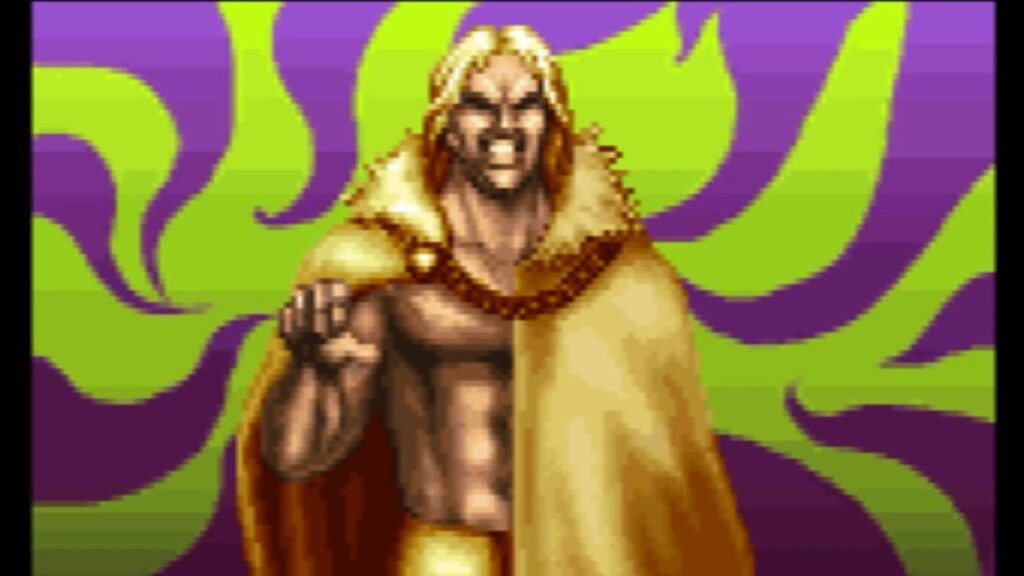
Sumisu’s final opponent, Dick Slender, is based on Ric Flair. Of course, in real life, Ric Flair was not a savage racist murderer who killed people indiscriminately on the ring; his portrayal in the game is based on his run as heel in WWF in 1991. He likely was chosen as Sumisu’s ultimate nemesis due to his character’s focus on wealthy lifestyle, media flaunting and self adulation, which Suda squarely framed as the sins ruining the world of Pro Wrestling through the game.
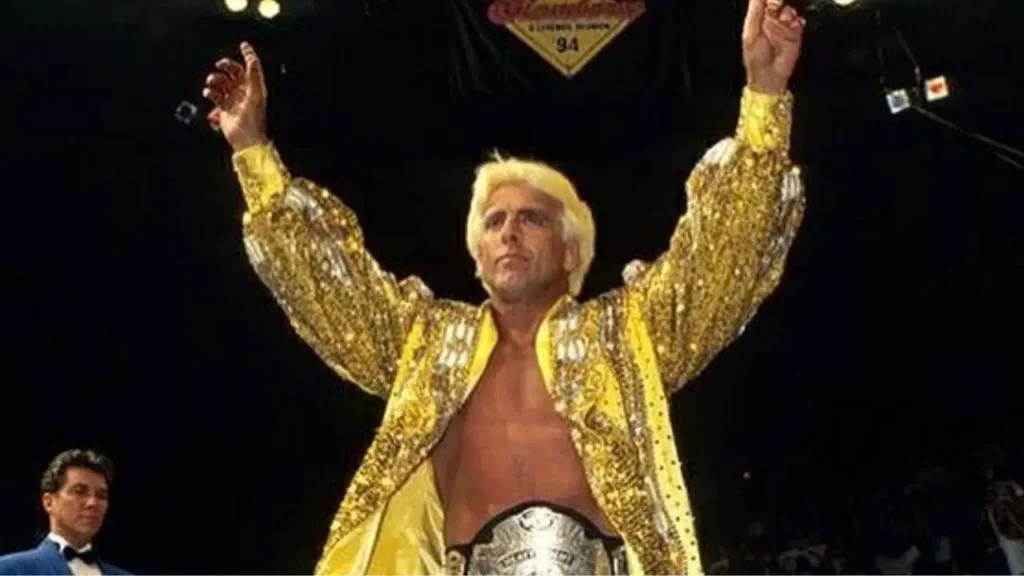
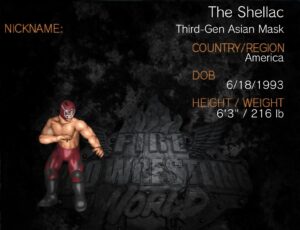
Champion Road’s ungodly 2020 sequel, Champion Road Beyond, reveals that Reiko was pregnant with Sumisu’s child when he died. Considering that his son’s date of birth is June 18th 1993, the ending of Champion Road likely takes place in the final months of 1992, meaning the whole campaign took place over eight years (1984-1992) and that Morio Sumisu succumbed to depression and killed himself at age 23.
This ending was controversial to say the least; back in 1994, feedback on games was mostly given through the form of postcards. Suda remembered in this retrospective that usually, feedback would take the form of suggesting new wrestlers or new moves for the games, but when Super Fire Pro Wrestling Special was released, they received boxes worth of postcards complaining about the ending.
In this Automaton Interview, Suda jokingly revealed that he managed to sneak the scenario past management since the higher ups at Human Entertainment didn’t really play their own games, and that the suicide was originally implemented as a “bad ending” if the player failed to defeat Dick Slender; however Suda, having worked as a funeral director, felt strongly about matters of life and death, and found the idea of having one match decide the life or death of the character to be childish. So we ended up with a story in which Morio Sumisu wins, and then kills himself.
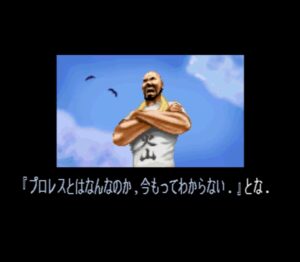
All through the campaign, Sumisu is searching for an answer. The question, as posited by Ittetsu Wakamoto, is “What is Pro Wrestling?” In order to answer it, Sumisu fights through the turbulent world of Japanese Pro Wrestling of the mid 80s to mid 90s, which saw the major promotions splitting and diluting the original Japanese Strong Style of wrestling as conceptualized by Carlos Krauser, Ittetsu Wakamoto and Victory Musashi.
It becomes clear that Sumisu must become the beacon that will light the path of a new era, uniting the divided world of Pro Wrestling; by pushing his psyche to the limit, Sumisu gets to the top of his chosen promotion and ends up challenging other martial artists, as Musashi and Akira Saeba did before him.
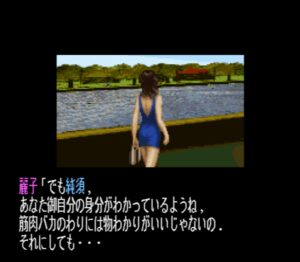
The sudden death of his master leaves him aimless, and he travels through Europe seeking advice from Andrey Fag and Dynamic Kid; he also meets with Reiko Saeba, whom he falls in love with immediately, but Reiko is a femme fatale who plays around with his heart, weakening his mental state. He is then defeated by Akira Saeba, one of his idols and Reiko’s brother, in the Japanese Championship, and has to leave his motherland behind.
At his lowest point, Sumisu reconnects with the roots of Pro Wrestling by traveling to Florida and studying under Carlos Krauser, the man who taught both Victory Musashi and Ittetsu Wakamoto. It is then that he absorbs his philosophy of a united world of wrestling, where the art of combat unifies the different ways of life of each and every fighter he has defeated up till that point.
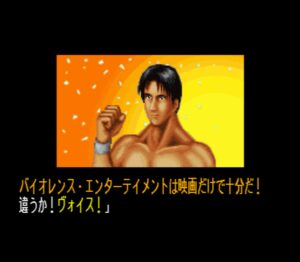
With newfound resolve, he travels to Bangkok to train in Muay Thai, but another meeting with Reiko is enough to drive him back to the edge and make him an alcoholic. This is when one of Wakamoto’s students, who trained alongside Sumisu at the beginning of his career, comes to rescue him. With his support, Sumisu conquers the Gruesome Fighting Championship, proving that the ultimate art of fighting is Professional Wrestling in a Vale Tudo match, and most importantly taking back Jiu Jitsu, a derivative of Japanese judo, from Brazil and the Staycie family, who had monopolized it to host violent tournaments meant to cater to bloodthirsty television audiences.
By openly challenging the media as the victor, Sumisu takes his first important step in purifying the world of combat, taking it back to its roots established by Krauser while paving the way for its future. Emboldened, he and his partner join the WWC and enter the Tag Team tournament in order to defeat the legendary Bright Bulls, Dynamic Kid’s team. Before the final fight, Sumisu asks his partner what Pro Wrestling is, and his answer is nonsense, or a joke. Not even the great legends Wakamoto and Musashi could answer that question.
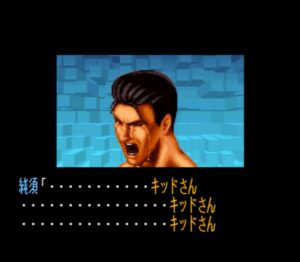
However, even after defeating Dynamic Kid, Sumisu is unable to find the answer. Moreover, this loss leads to his retirement, which makes Sumisu break down in tears.
He and his partner then challenge the World Championship. Through the preliminaries, Sumisu is filled with a mysterious energy, taking down each opponent with ease and often appearing overconfident when talking to his second, describing himself as a man on a mission. The two promise each other to meet in the finals, with their fight signalling the beginning of a new age.
In Wembly Stadium, right before the finals, Sumisu is immediately approached by Reiko, who tells him she got tired of waiting for him and is now getting married. Sumisu does not respond, and during his fights he is completely silent, portrayed almost as in a zen-like state. As he gets to the semi-final match, he faces Akira Saeba and he’s finally able to defeat him. The two embrace, and share words on what it truly means to reach a moment of perfection when fighting.
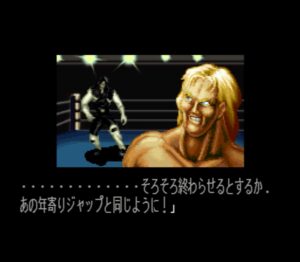
However, Sumisu’s dreams are crushed when the ferocious Dick Slender, who is also responsible for Wakamoto’s death, kills his partner in the ring, preventing the final match that would have ushered in a new age from taking place. Slender is the emblem of everything that’s wrong with the world of Pro Wrestling as posited by Suda in this story: the lack of respect, the violence, the focus on fame and money. Sumisu emerges triumphant, but it is clear to anyone looking on to him that he does not have much time left. He apologizes, perhaps in an internal monologue, about being unable to find the answer, as Akira and Reiko try to reach out to him; in the end, he says he’s glad he got to be a Pro Wrestler, and that he hopes the children who watched him will inherit his will.
Three days later, Sumisu commits suicide by gunshot in his own house.
But was the answer that Sumisu was looking for, really the one to the question “What is Pro Wrestling?”
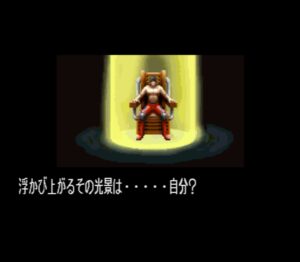
I am going to posit that Sumisu was actually looking for a different answer, one to a question he himself did not know: The game opens on his recurring nightmare, with Sumisu walking down an endless corridor, part of a maze without exit. However, in the game’s opening, he finally sees a light: squinting his eyes he sees himself, sitting on the throne as wrestling champion. This is the moment that spurs Sumisu, at this point a 15 year old boy, into going to Wakamoto’s dojo to begin his training, meaning that his inner torment is antecedent to even being presented with the ultimate question of Pro Wrestling by Wakamoto.
In fact, his character bio on the manual explains that Sumisu had a lonely childhood specifically because of his tormented aura, meaning that this shadow has been following him since his earliest days.
To Morio, Pro Wrestling is a way to escape from the dark maze of his mind, and reach what he describes as “The Promised Land”, clearly a precursor of the Paradise motif that Suda would incorporate in his later work.
What leads him to suicide is not being unable to answer the ultimate question of Pro Wrestling, which, as has been posited by Wakamoto and Musashi, is likely to be an eternal question that everyone who walks the path will have to challenge; instead, it’s his inability to find the answer to a question he does not even know how to ask, which ultimately results in his death. This is also played with again in the final chapter of Moonlight Syndrome, with the main character being unable to find an external truth.
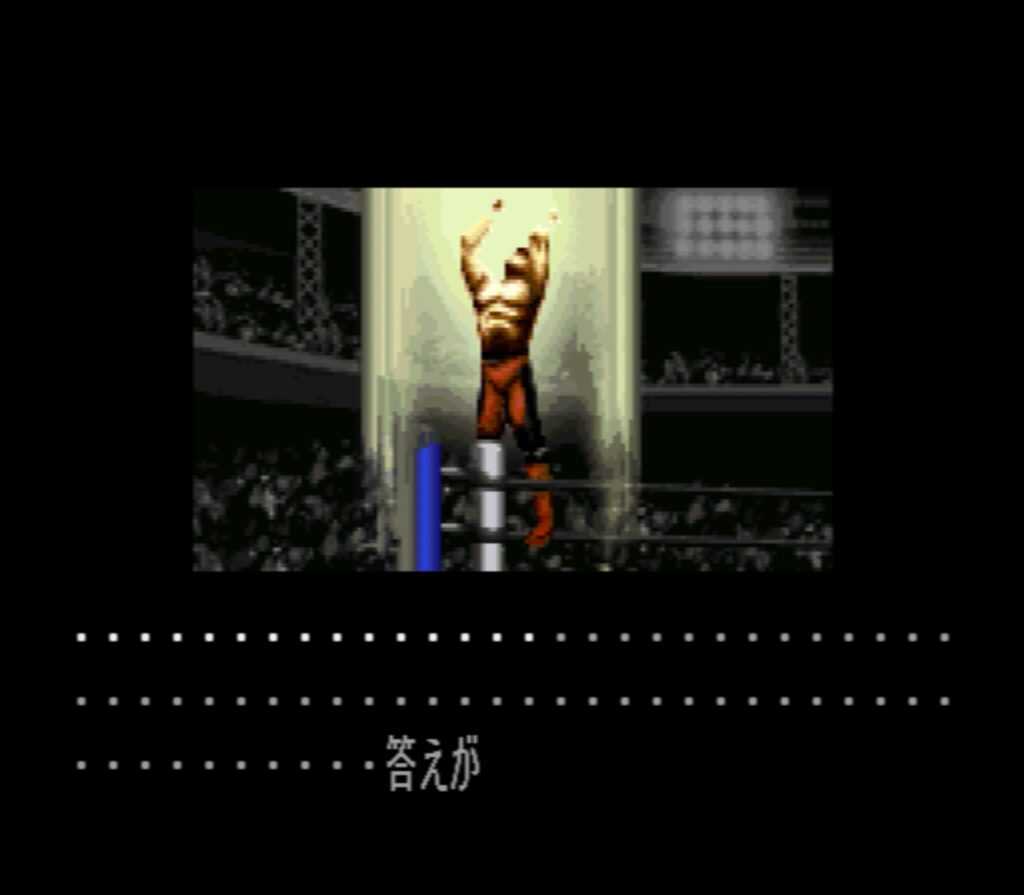
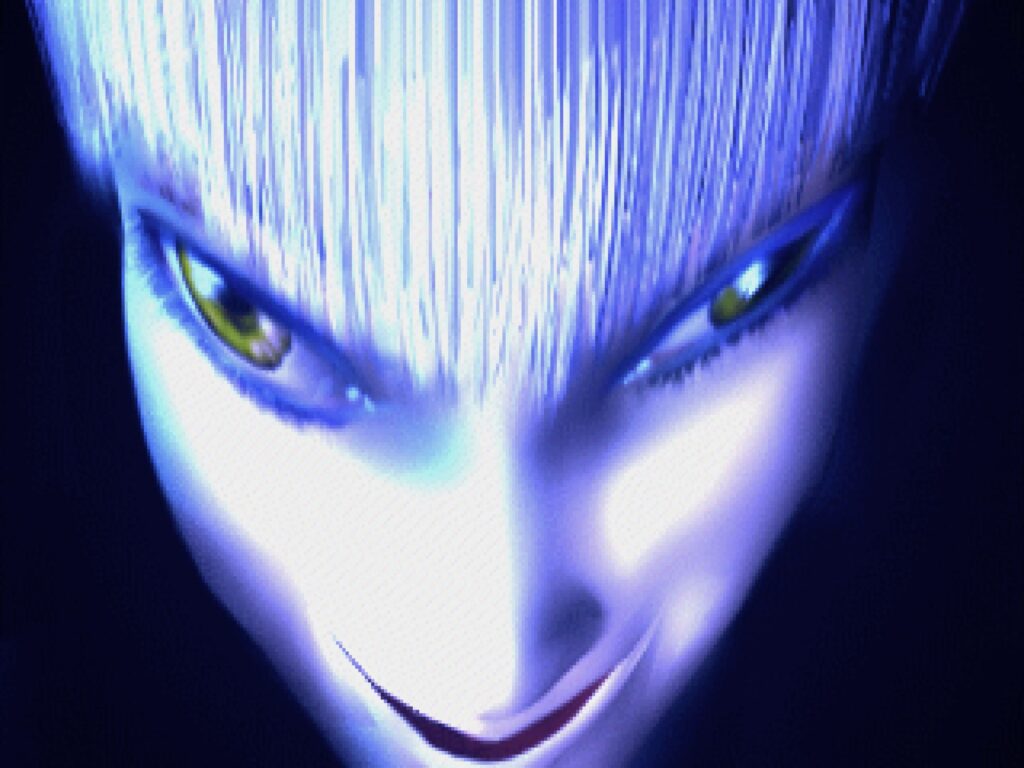
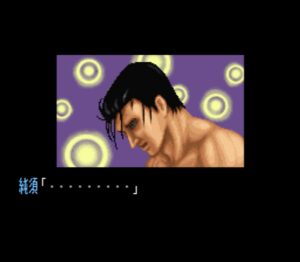
Sumisu’s mental state deteriorates over time as the game goes on, and rarely gets any better: By the time he enters the world of mixed martial arts, he is a mute husk, and it’s immediately followed by the death of his master. The game’s prose makes it clear that whenever Sumisu is close to reaching some kind of peace, he is always interrupted by the presence of Reiko, which eventually drives him to alcoholism.
This happens three times: on the Jungfrau, when healing from Wakamoto’s death, when staring into the Thames after meeting with his idol Dynamic Kid, and when resting in a hotel in Bangkok (which the game specifically describes as his first time being able to rest in a long time). However, a darker interpretation is also possible: one might assume that on the Jungfrau and on the Thames, Sumisu might also have been contemplating suicide.
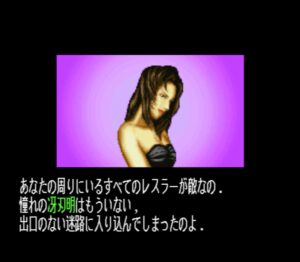
Especially when looking at the river, the prose asserts that Sumisu thought he might find his Promised Land in it. Was he going to jump in the river? Was Reiko’s presence a torture to him, or did it save his life? While she is portrayed as a femme fatale and a maneater, Reiko is also shown as harboring sincere feelings for Sumisu, and she is also somehow aware of the “maze”, as she mentions it directly in dialogue in Bangkok.
We are told by Akira Saeba during the World Championship that Sumisu suffered a mental breakdown in New York. We are not shown this chronologically through the game: While Sumisu is distraught after realizing that he ended Kid’s career, his next chronological appearance shows him filled with energy and ready to fight.
What this is implying, is that Sumisu had already decided to end his life before joining the World Championship: Depressed people often seem brighter and happier as they see the end coming. It is only with the later context of Saeba’s words that we can properly frame his mental state in the preliminaries.
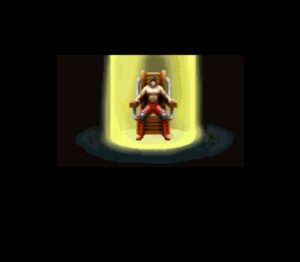
This is also why he makes no effort to reach out to Reiko, even after she tells him she’s gotten engaged. In his mind, Sumisu is on a one track ride to the afterlife, even if he did get to fight his partner. The game compares him directly with Tommy Bomber, a wrestler at the end of his life, looking for a place to die, his own way out of the maze. By the time he gets to fight Saeba, he ominously says that he does not have much time left.
In the Suda51 Official Complete Book, Suda revealed that one of the inspirations behind Sumisu’s tale was the suicide of Kurt Cobain. His question, “why would somebody end their lives after achieving the level of God?” ties into the aforementioned Automaton Interview, where he described Sumisu’s suicide as a way of ascending to a God of Wrestling.
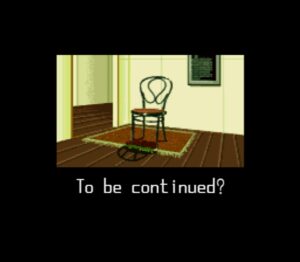
In his final farewell, Morio says that he will watch over the ones he loves. While he fails at finding a reason to live, a way out of the dark maze of his mind, with his death he may succeed in becoming the foundation of the next era of Pro Wrestling. He then sees himself one last time, just as he saw himself at the end of the maze at the very beginning of the game: Is that his throne as a God of Wrestling? Does that mean that death was truly what he sought in order to escape?
The game ends on a “to be continued”, and while it did unfortunately receive a sequel 25 years later, I think the implication at the time was that the story would continue on in the real world, especially as Suda planned to move on to a personal project after Special, rather than a sequel. Would the corrupt world of Pro Wrestling be purified by Sumisu’s sacrifice? Did he really pave the way to a new era?
